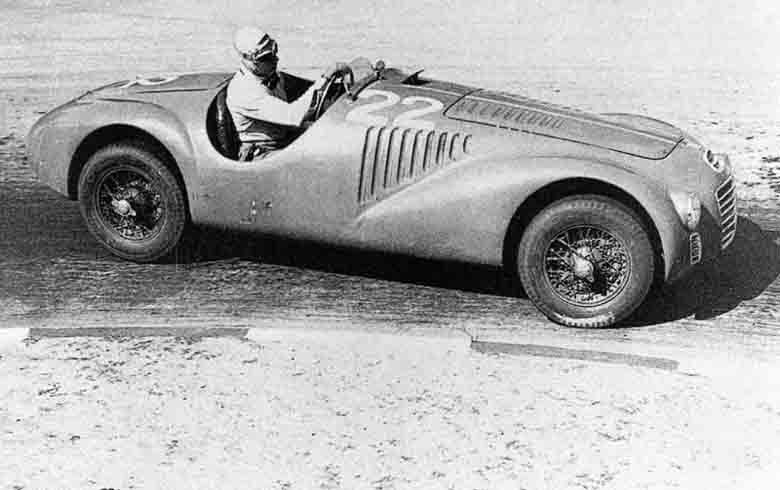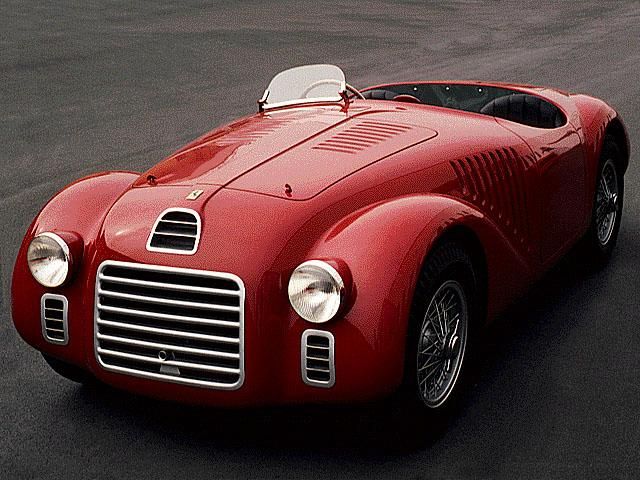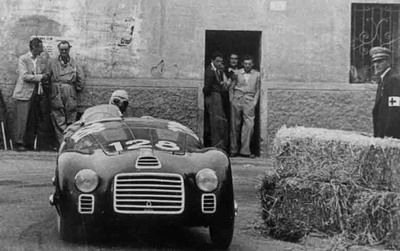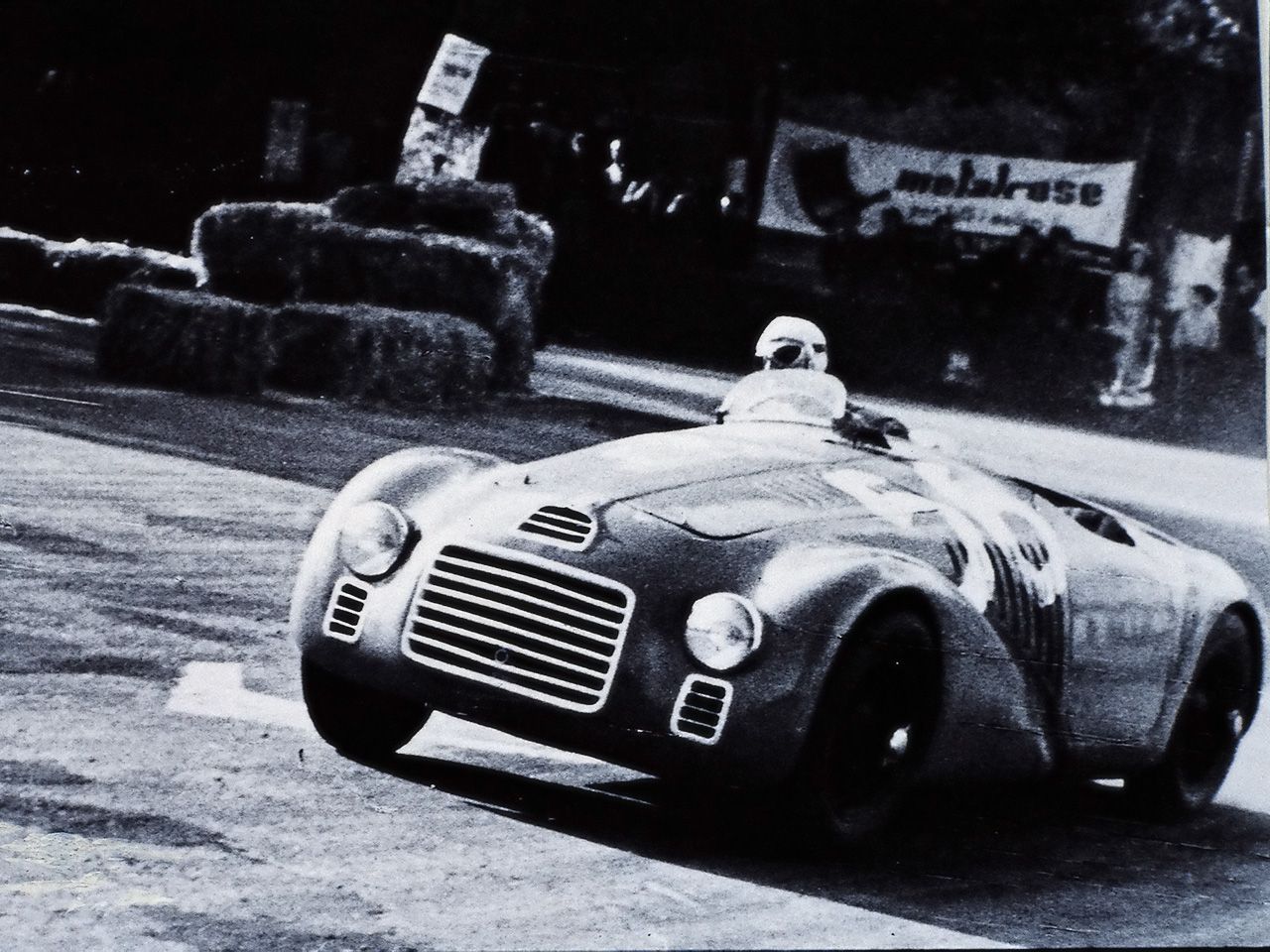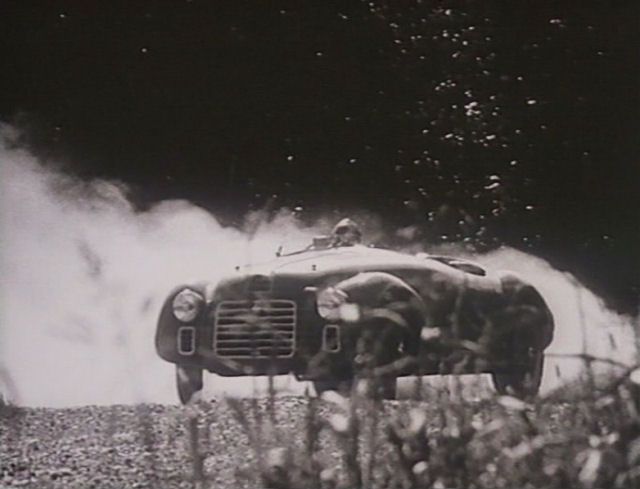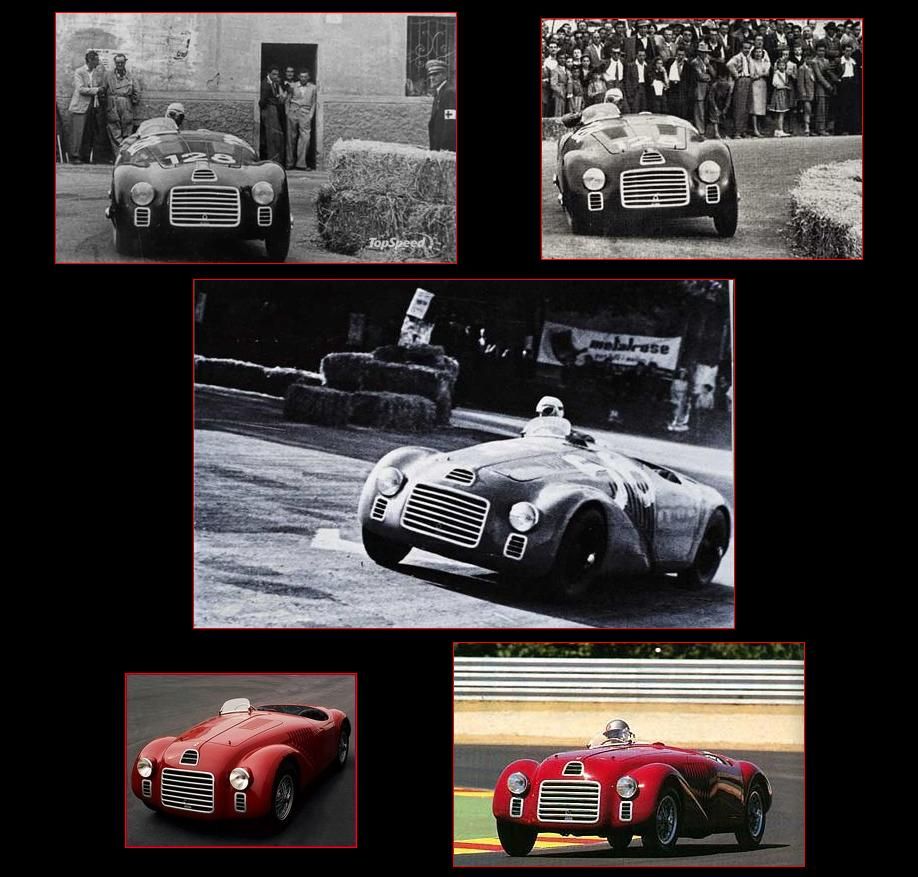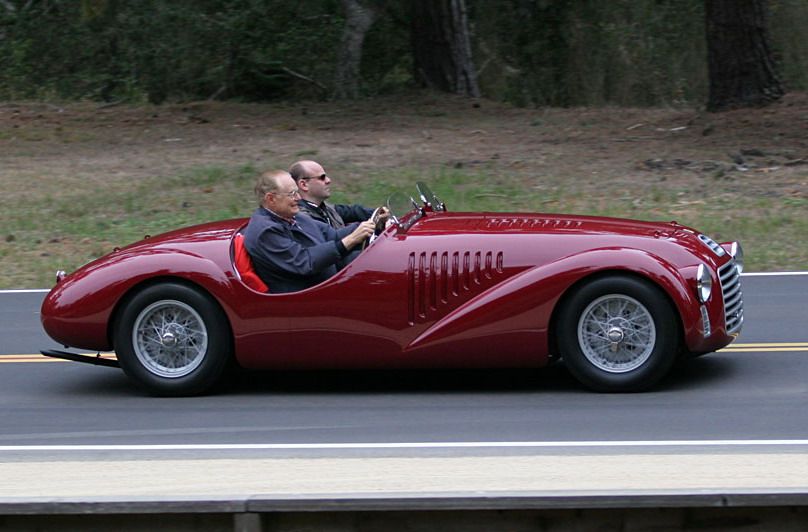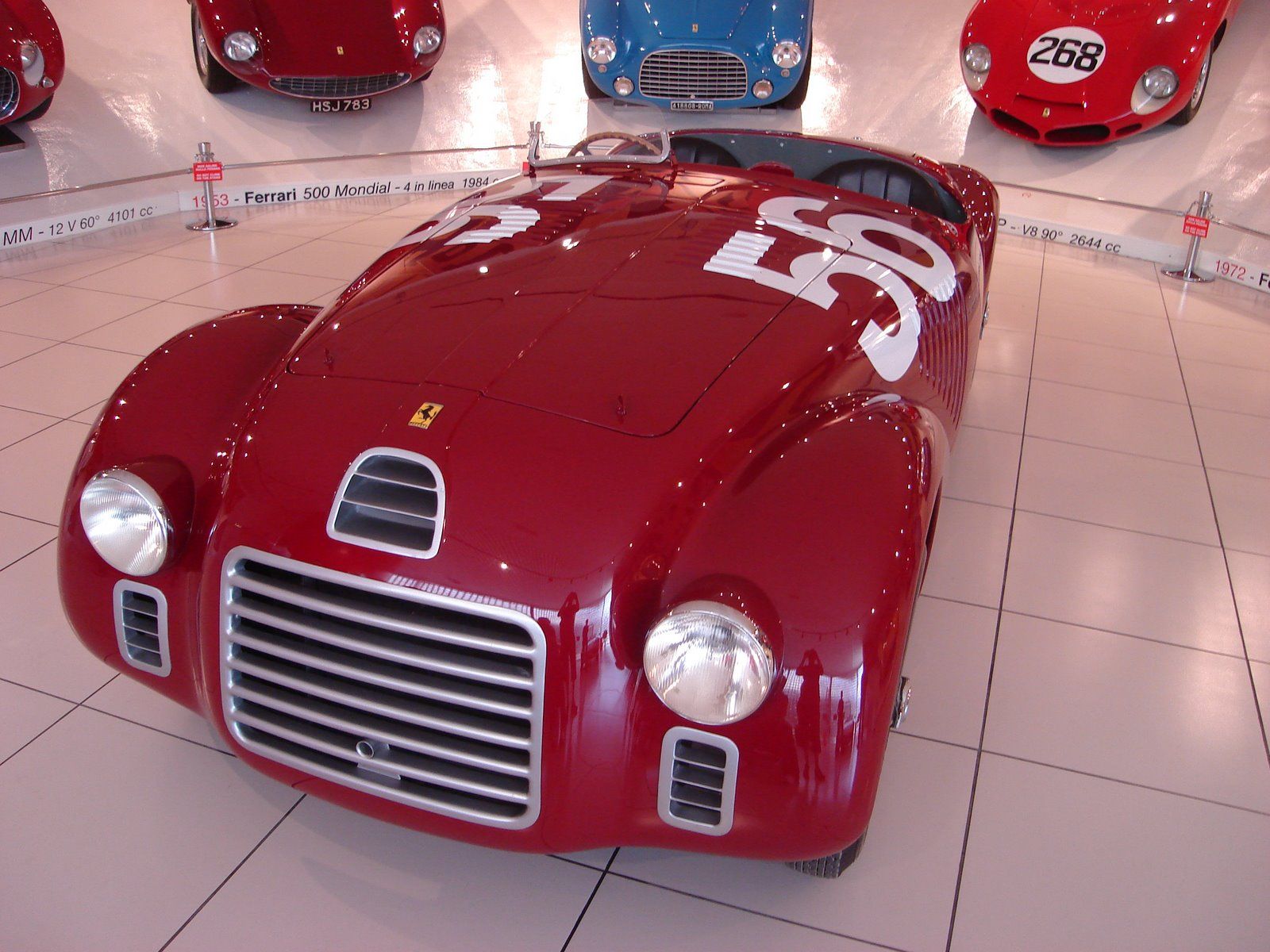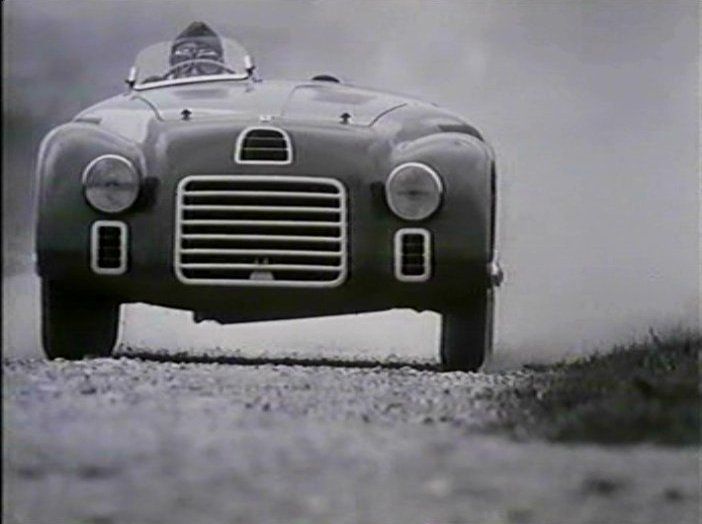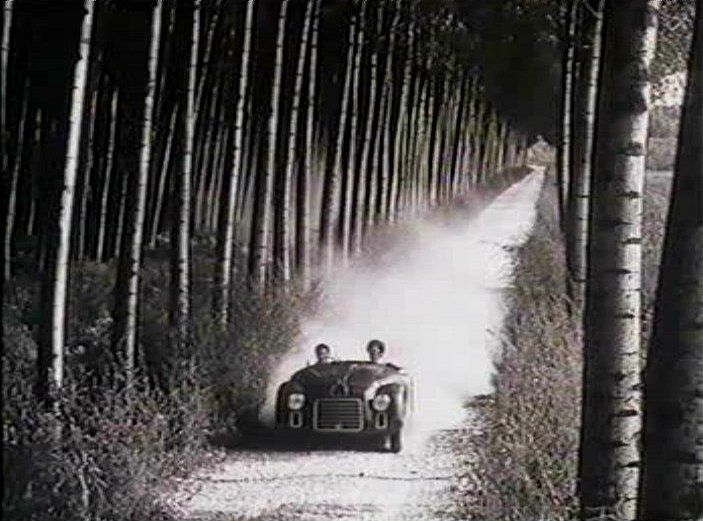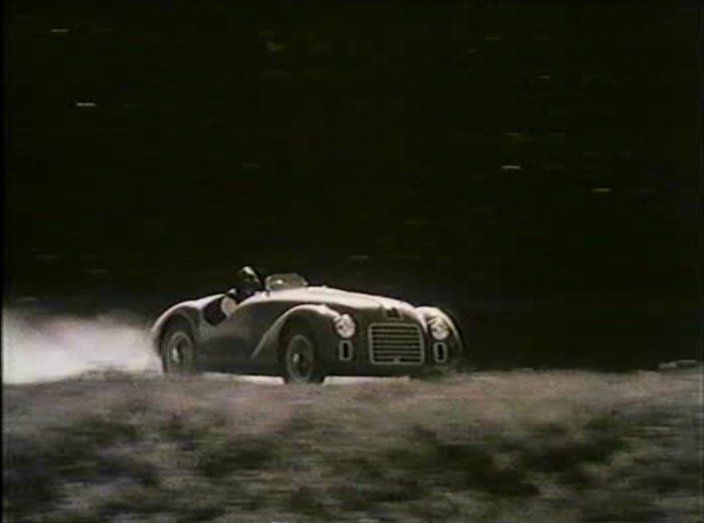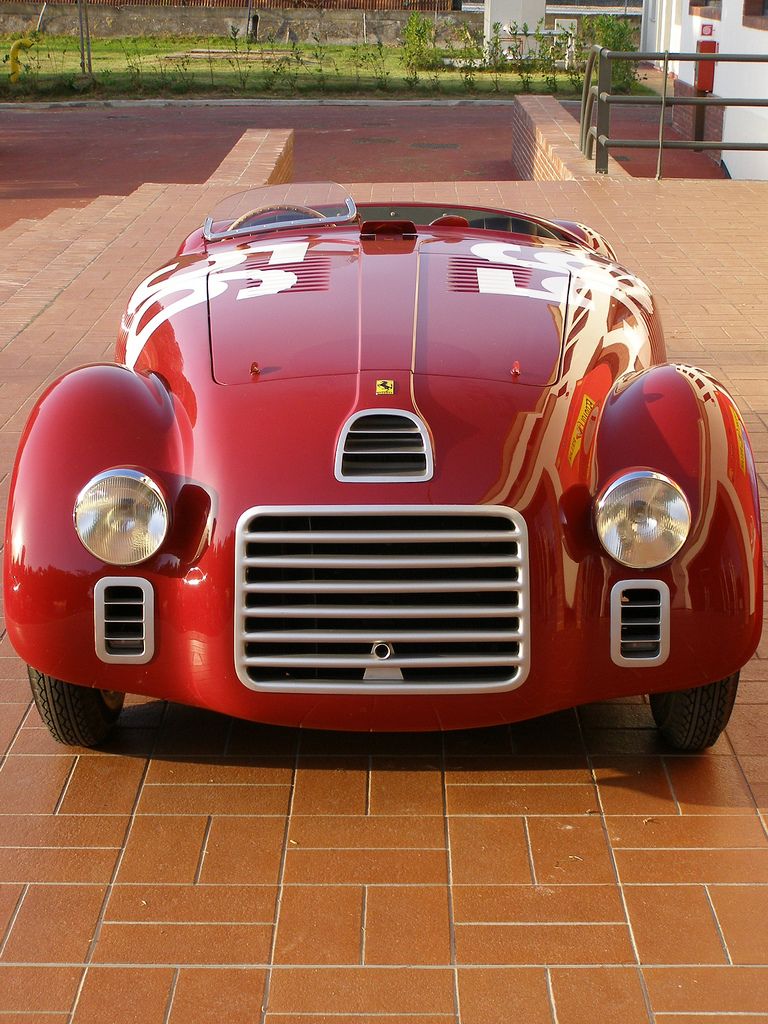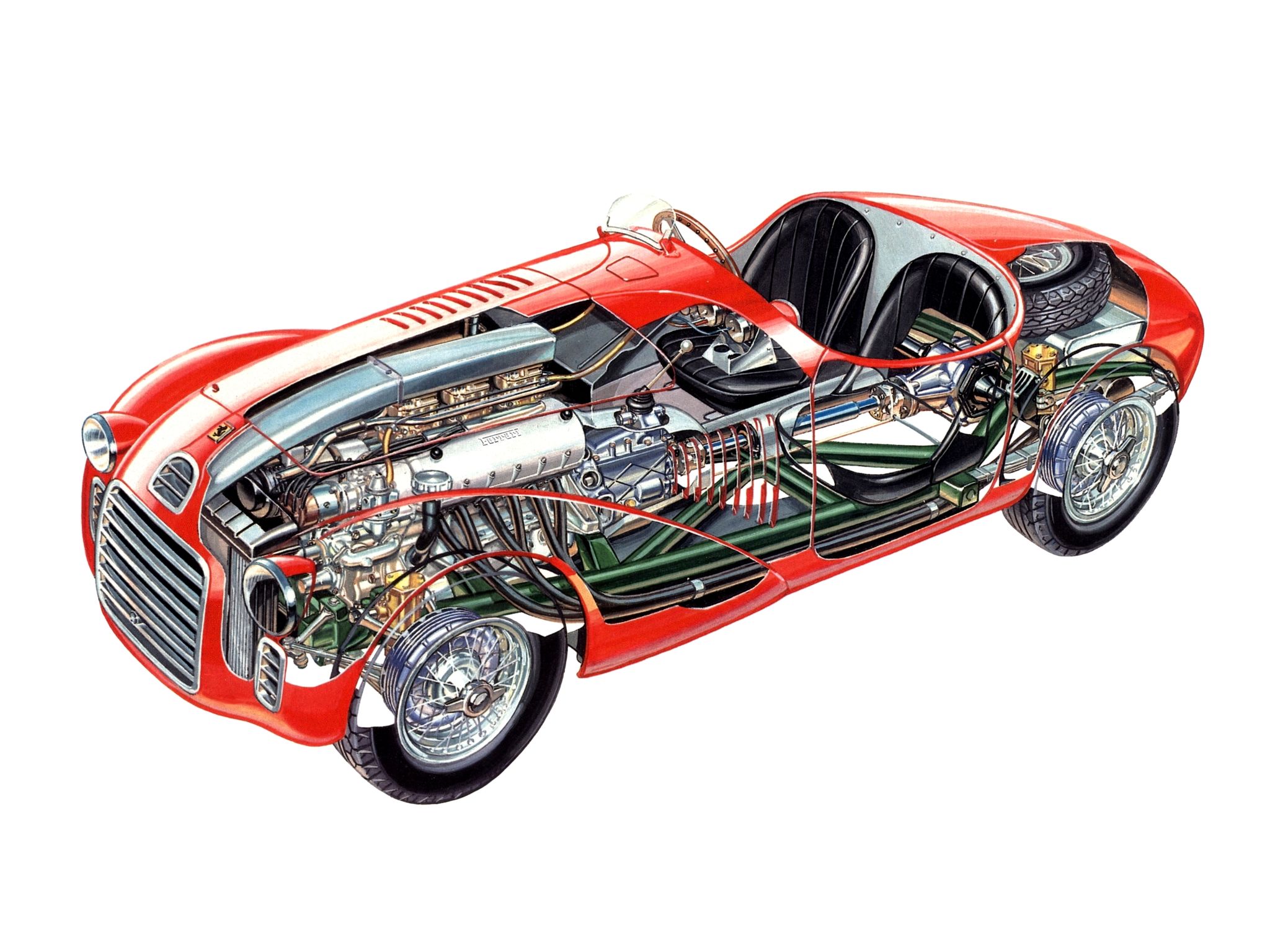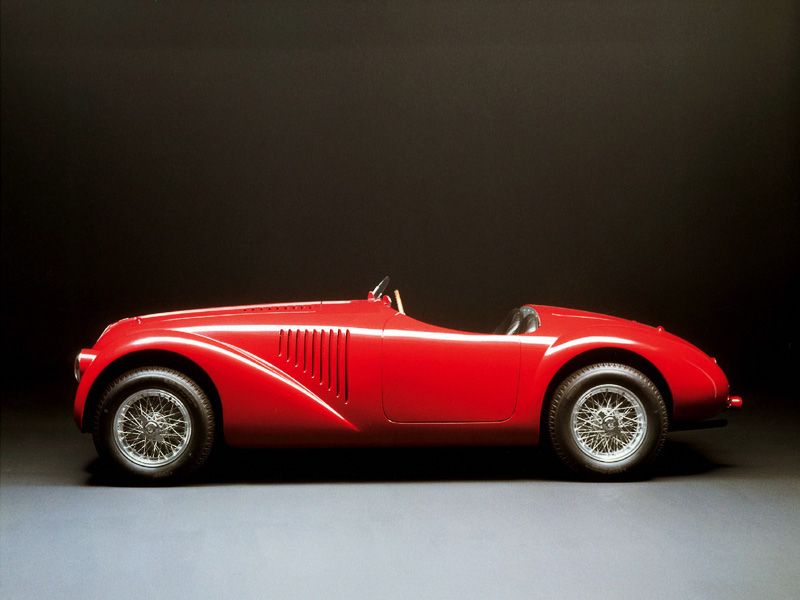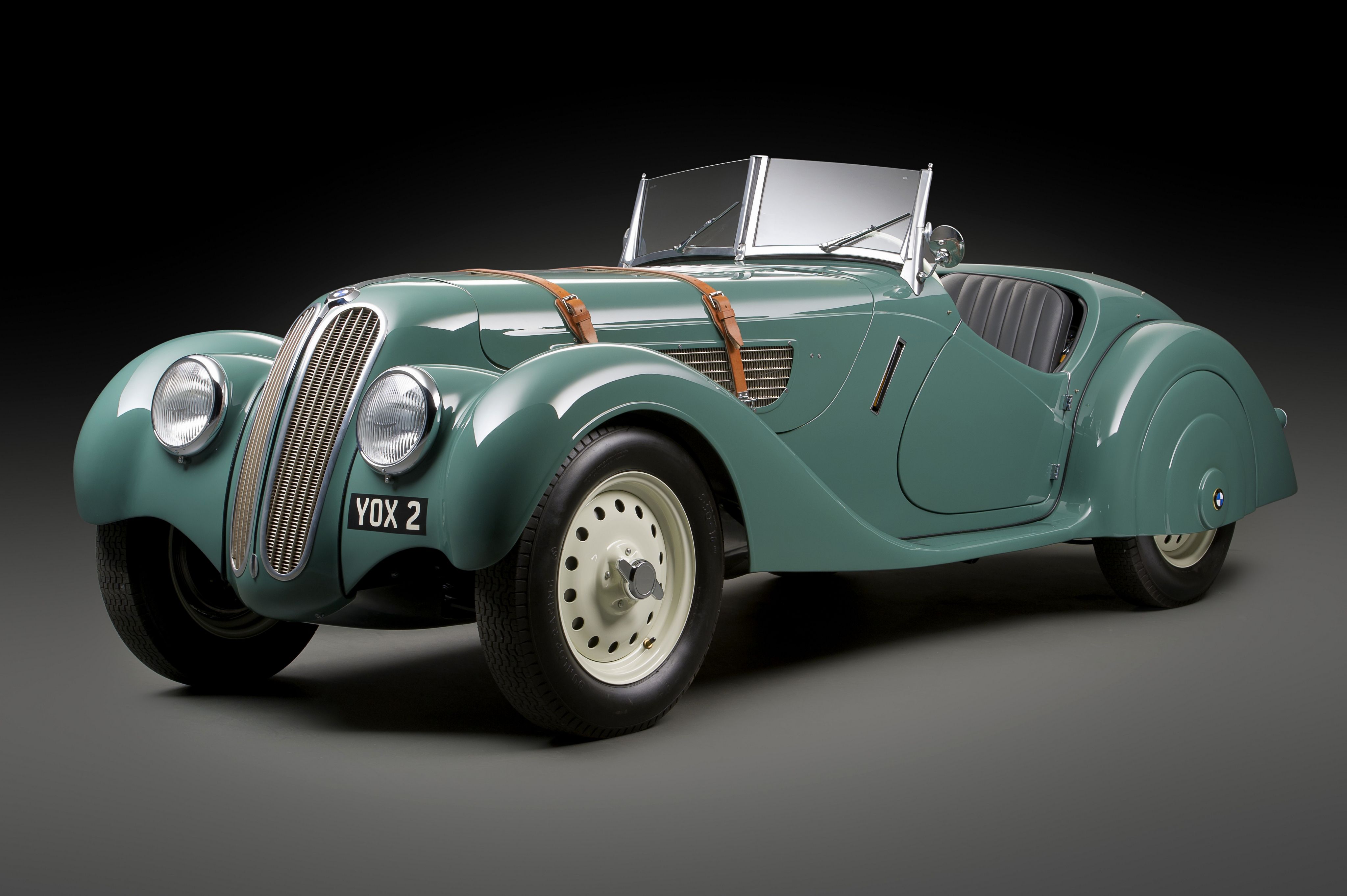Although Enzo Ferrari founded the Scuderia Ferrari as early as 1929, the company took nearly two decades to develop its first race car. After preparing and fielding Alfa Romeo->ke1386 race cars->ke148 for amateur drivers, as well as heading up the brand's racing->ke447 division, Enzo Ferrari left the Italian company in 1939 and founded Auto Avio Costruzioni. The new company launched the Tipo 815 race car in 1940, but the vehicle saw little competition due to World War II. During the conflict, Ferrari'->ke252s factory was bombed by the Allies in 1944. Scuderia rebuilt it in 1946 and began development of the 125 S -- the first vehicle to bear the Ferrari name.
Developed over two years from a clean sheet of paper, the 125 S had a unique design and received a naturally aspirated V-12 engine. Ferrari built only two cars. Chassis 01C, also known as the Piacenza roadster,->ke1418 had a conventional sports car->ke506 body and it was used in various races throughout 1947. The second model, chassis 02C, featured cycle fenders and different bodywork. The 01C is arguably the more famous model of the two.
The 125 S was short-lived, but had an intense life. Although it was only used during Ferrari's first year in business, chassis 01C took part in 13 races, while chassis 02C was fielded in six events. Both chassis were later fitted with larger engines and updated bodywork. In 2006, the 01C was restored with a Piacenza roadster body by Ferrari's own Classiche program and displayed at the Pebble Beach Concours d'Elegance.->ke2839
Continue reading to learn more about the 1947 Ferrari 125 S.
ferrari-125-s
- Make: Array
- Model: ferrari-125-s
1947 Ferrari 125 S
- Make: Array
- Model: 1947 Ferrari 125 S
- Horsepower: 118 @ 6800
- [do not use] Vehicle Model: Array
Exterior
Although it borrowed some styling cues from the Auto Avio Costruzioni 815, the 125 S had a unique design compared to other sports cars of the late 1940s. Instead of the conventional mesh grille seen on other racers, the Ferrari had a square intake with horizontal slats. Three smaller vents were added to the front fascia, one above the main grille and two underneath each headlamp.
The rear was a simpler interpretation of the boat-tail style, but had integrated fenders. Aside from the center-mounted taillight, the exhaust pipes, and the small trunk lid, the 125 S' rear fascia was featureless. One of the 125 S' most interesting features was that it had just one conventional door, on the passenger's side. On the driver's side, there was a cutout in the metal panel through which the pilot jumped inside.
The body was penned by Giuseppe Busso and built by Giuseppe Peiretti.
The 02C, on the other hand, had a narrow cigar body, similar to early Formula One cars, but sported cycle fenders front and rear, as well as conventional headlamps.
The 125 S was no beauty contest winner, but its purpose was to win races and kickstart Ferrari as a full-fledged manufacturer. Looking at what Ferrari went on to accomplish from 1947 onward, it's safe to assume that the 125 S achieved its goals.
Exterior Dimensions
|
Wheelbase |
2,420 MM (95.27 Inches) |
|
Front track |
1,240 MM (48.81 Inches) |
|
Rear track |
1,240 MM (48.81 Inches) |
Interior
Much like all sports cars from the era, the 125 S had a spartan interior and was a far cry from the luxurious vehicles Ferrari went on to sell in the 1960s. The dashboard was just a simple panel with a large rev counter, five smaller gauges, and a few switches. The large steering wheel had a wooden rim and chrome spokes. The seats had bolstering, but no headrests or safety belts. The driver and the passenger were protected by only a pair of small glass screens from wind and rain. All told, the 125 S' cockpit was far from fancy and totally unsafe, but it was in line with what other race car manufacturers offered back in the day.
Drivetrain
The highlight of the 125 S was its drivetrain. Unlike Enzo's previous project, the 815, the 125 S used a 1.5-liter V-12 designed by Gioachino Colombo. It was the first engine Colombo had built for Ferrari. It had a single overhead camshaft on each bank of cylinders with a 60-degree angle between the two banks, two valves per cylinder, and three Weber 30DCF carburetors. The V-12 was good for 118 horsepower at 6,800 rpm. Top speed was estimated at 130 mph.
The engine was later used in the 125 F1, Ferrari's first Formula One car, in which it received a single supercharger (230 horsepower) in 1948 and a dual-stage supercharger (280 horsepower) in 1949.
In the 125 S, the V-12 mated to a five-speed gearbox. Most race cars from the era used four-speed gearboxes.
The roadster used a steel tube-frame chassis and had a double wishbone suspension with transverse leaf springs at the front and a live axle to the rear. Stopping power came from hydraulic power drum brakes at all four corners. The 125 S carried its fuel in a 16.5-gallon tank.
Drivetrain Specifications
|
Engine |
anteriore, longitudinale, 12V 60° |
|
Bore/stroke |
55 x 52.5 mm |
|
Unitary displacement |
124.73 cc |
|
Total displacement |
1496.77 cc |
|
Compression ratio |
9.5 : 1 |
|
Maximum power |
118 HP @ 6,800 RPM |
|
Power per liter |
79 hp/l |
|
Valve actuation |
single overhead camshaft per bank, two valves per cylinder |
|
Top speed |
210 KM/H (130 MPH) |
Prices
Since only two cars were built and both were used as basis for other Ferrari race cars, it is difficult to estimate their value today. And, the 01C's complicated history adds to that.
After suffering a small crash in 1948, the chassis was restamped and sold as a 166 Spider Corsa. Its new owner rebodied the car with a new cycle fender body, which was maintained until 1974. During a restoration process by Bill Noon, it was discovered that the chassis had been restamped over the original 01C. Although there is no proof as to what the original chassis looked like, many Ferrari historians agreed that it was in fact the 01C.
Though it's very unlikely that the restored 125 S will change owners anytime soon, the sports car is likely to fetch at least $5 million if it goes up for public auction.
Racing History
The 125 S spent its entire career racing in Italy and debuted at Piacenza in May 1947. Both chassis competed in 13 races between May and August 1947, scoring six wins and two more podiums.
Two of those wins were achieved by chassis 01C at Grand Prix Roma and Vercelli. The 01C then arrived at the Mille Miglia->ke2659 with Fanco Cortese and Adelmo Marchetti behind the wheel, but failed to finish the grueling event. The same car finished second in Parma and third in Florence, before scoring another DNF in Livorno.
Chassis 02C was a bit more successful than the 01C, winning four events.
Notable drivers included Franco Cortese, Tazio Nuvolari, and Giuseppe Farina, all three iconic racing figures of the 1940s and 1950s.
Competition
BMW 328
The 125 S was raced against many Italian cars built by Alfa Romeo,->ke1386 Fiat->ke30 or Maserati->ke51 in 1947, but competition also came from the BMW 328. Although it was discontinued in 1940, the 328 remained competitive after World War II, winning more than 20 events between 1946 and 1955. Unlike the 125 S, the 328 won Mille Miglia on two occasions, in 1938 and 1940. The German roadster was originally powered by a 2.0-liter, straight-six rated at 79 horsepower, but the engine received several improvements from privateers. Built in no fewer than 464 units, the 328 received various body styles and its now regarded as one of the most collectible classic BMWs.
Auto Avio Costruzioni 815
Ironically, the 125 S also had to compete against its spiritual predecessor, the 815. Built by Enzo Ferrari in Modena in 1940, the 815 showed up at both the Mille Miglia and the Italian racing championship with the same Fiat-sourced, 1.5-liter, inline-eight under the hood. Even though it failed to finish the race (or win any races that year), the 815 made a good impression against more modern machinery. Much like the 125 S, the 815 retired at the end of the 1947 season. Enzo built only two examples. One was scrapped in 1958, while the other resides in a private collection. The surviving car was previously driven by Formula One champion Alberto Ascari.
Read our full review here.
Conclusion
Though it's not as beautiful as the 250 GTO or other Ferraris from the 1950s and 1960s, the 125 S is definitely an important piece in the company's storied history. Not only is the 125 S the first Ferrari ever built, it also had a successful racing career. Sure, the 125 S never made it outside Italy and failed to finish in its only Mille Miglia race, but its accomplishments are downright impressive given it was the first race car built by Ferrari and had an in-house-developed powerplant. To most Ferrari gearheads, the 125 S is just as important as the 250 GTO or the 250 Testa Rossa.


